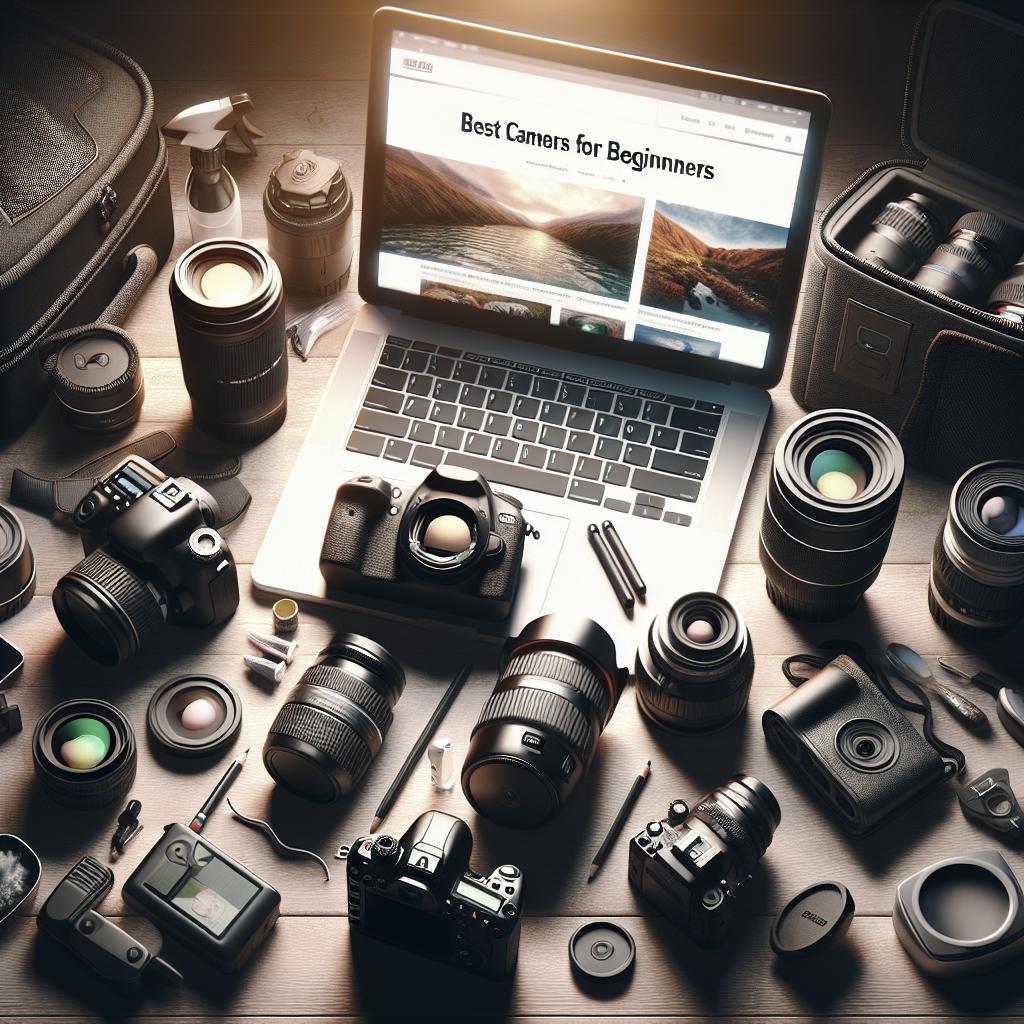Wildlife photography can be one of the most rewarding and exhilarating forms of photography. Capturing the beauty of animals in their natural habitat requires a combination of skill, patience, and a deep respect for nature. In this blog post, we’ll guide you on how to get started with wildlife photography and provide valuable tips for beginners. You’ll learn about handling low light situations, achieving sharp photos, researching your subject, the importance of ethics, and much more. Whether you’re a budding photographer or someone looking to refine your skills, these insights will help you capture stunning animal photos that tell a story.
How to get into wildlife photography
Starting a journey in wildlife photography can be both exciting and daunting. It often begins with a love for animals and nature, combined with an interest in capturing moments through a lens. To get started, invest in a good quality camera with a versatile lens. It’s not necessary to purchase the most expensive gear at the outset; what’s essential is that you are comfortable with your equipment and understand its capabilities.
Joining local wildlife clubs or online communities can also be incredibly beneficial. These platforms are great for learning about the best locations to photograph wildlife, getting tips from experienced photographers, and even finding mentors. Workshops and courses can provide hands-on experience and accelerated learning, giving you the confidence to start shooting in the wild.
Tips on wildlife photography for beginners
1. Learn how to deal with low light situations
Low light conditions are common in wildlife photography, especially during dawn and dusk when animals are most active. Understanding how to manage low light situations can significantly improve your photos. Start with adjusting your ISO settings. Increasing the ISO will make your camera sensor more sensitive to light, but be cautious as it can introduce noise to your images.
Using a tripod can also help stabilize your camera, allowing for longer shutter speeds without blurring the image. Additionally, consider using a wide aperture (small f-number) to let in more light. Practice finding the right balance between ISO, shutter speed, and aperture to get clear, bright photos in low light conditions.
2. Get to grips with what makes a photo sharp
Achieving sharpness in wildlife photography is crucial. Start by understanding the relationship between shutter speed and motion. A faster shutter speed will help freeze the movement of animals, reducing motion blur. However, if you’re using a telephoto lens, you’ll need an even faster shutter speed to counteract camera shake.
Another factor is focusing techniques. Learn to use single-point focus for greater accuracy, especially when shooting animals with complex backgrounds. Practicing these focusing techniques in various situations will help ensure your wildlife photos are sharp and detailed.
3. Research your subject
One of the best things you can do before heading out to photograph wildlife is to research your subject. Understanding the behavior, habitats, and schedules of the animals you want to capture will increase your chances of success. Knowing when and where certain animals are most active allows you to be in the right place at the right time.
Spend time observing the animals without your camera initially. This will help you understand their movements and anticipate their actions, which is invaluable when you start shooting. The more you know about your subject, the better your photos will reflect their true essence.
4. You don’t always need more zoom
While a powerful telephoto lens can be invaluable for wildlife photography, it’s not always necessary to have extreme zoom capabilities. Sometimes, getting closer to your subject can yield better results. Practice getting close to animals by moving quietly and respecting their space.
Cropping your images during post-processing can also help you achieve the desired composition without needing an extensive zoom. Focus on capturing the moment and maintaining a high-quality image, even if it means sacrificing a bit of zoom.
5. Develop your fieldcraft skills
Fieldcraft refers to the skills needed to operate effectively in the wild. This includes being able to move quietly, understanding animal behavior, and knowing how to blend into the environment. Developing these skills will help you get closer to wildlife and capture more authentic moments.
Invest time in learning how to read tracks, understand calls, and recognize signs of animal presence. Good fieldcraft skills will not only improve your photographic opportunities but also enhance your overall experience in wildlife photography.
6. Make good ethics a core part of your work
Ethical considerations should be at the forefront of wildlife photography. Always put the welfare of the animals and their habitat first. Avoid disturbing or stressing the animals and never manipulate their environment for the sake of a photo.
Respect boundaries set by wildlife protection authorities and follow guidelines for responsible photography. By practicing good ethics, you contribute to the conservation of wildlife and ensure that future generations can enjoy the beauty of nature.
7. Work with local knowledge
Local guides and experts can provide valuable insights that you might not find in books or online. They know the best spots to find animals, the times they are active, and how to approach them safely. Collaborating with locals can greatly enhance your photography experience and success rate.
Joining local photography groups or hiring a guide when visiting new places can open doors to unique opportunities. Always be open to learning from those who have firsthand experience with the wildlife in the area.
8. Try the rule of thirds
The rule of thirds is a fundamental principle in photography that can add balance and interest to your images. Imagine your frame divided into nine equal parts by two horizontal and two vertical lines. Placing your subject along these lines or at their intersections can create a more dynamical composition.
While it’s tempting to center your subject, using the rule of thirds can make your photos more engaging and visually appealing. Experiment with this technique to see how it can improve your animal portraits.
9. Put in the time necessary
Wildlife photography requires patience and dedication. Success doesn’t come overnight; it takes time to understand animal behavior, perfect your techniques, and wait for the right moments. Be prepared to spend hours, days, or even weeks to capture that perfect shot.
Persevere through challenges and keep practicing. The more time you put into your craft, the more likely you are to create stunning images that showcase the beauty and diversity of wildlife.
10. Shoot on eye-level
Shooting from the eye-level of animals can create more intimate and compelling images. It draws viewers into the scene and provides a unique perspective that’s different from the human vantage point. Getting down to the animal’s level often involves kneeling or even lying on the ground.
While this can be physically demanding, the results are well worth the effort. Eye-level shots can convey a sense of connection with the wildlife, making your photos more impactful and memorable.
10 more tips!
1. Use a fast memory card to ensure you can capture sequences quickly.
2. Wear neutral-colored clothing to blend into the environment.
3. Bring extra batteries and memory cards for extended shoots.
4. Study the weather and lighting conditions before heading out.
5. Use silent mode to avoid startling animals.
6. Create a photo checklist to ensure a variety of shots.
7. Practice patience and remain still for long periods.
8. Use a fanny pack or vest for easy access to gear.
9. Be mindful of safety, both yours and the animals’.
10. Constantly review and analyze your photos to improve your skills.
Final thoughts
Wildlife photography is a journey that combines technical skill, patience, and a passion for nature. By following these tips and continuously honing your craft, you’ll be able to capture stunning images that speak volumes about the beauty and complexity of the animal world. Always remember to act ethically and responsibly, ensuring that the welfare of the animals and their habitats is prioritized. Armed with knowledge, respect, and the right techniques, you’ll be well on your way to becoming a proficient wildlife photographer.
| Tip | Description |
|---|---|
| Learn how to deal with low light situations | Manage ISO, shutter speed, and aperture for better photos in low light. |
| Get to grips with what makes a photo sharp | Understand shutter speed and focus techniques to achieve sharp images. |
| Research your subject | Know the behavior and habitat of the animals for better photo opportunities. |
| You don’t always need more zoom | Focus on getting closer and cropping images rather than relying solely on zoom. |
| Develop your fieldcraft skills | Learn to move quietly and understand animal behavior for better photos. |
| Make good ethics a core part of your work | Prioritize the welfare of animals and their environment in your photography. |
| Work with local knowledge | Use insights from local guides and photographers for unique opportunities. |
| Try the rule of thirds | Improve composition by placing subjects along grid lines or intersections. |
| Put in the time necessary | Invest time and patience to capture the perfect wildlife shots. |
| Shoot on eye-level | Create intimate and engaging images by photographing at the animal’s eye level. |


